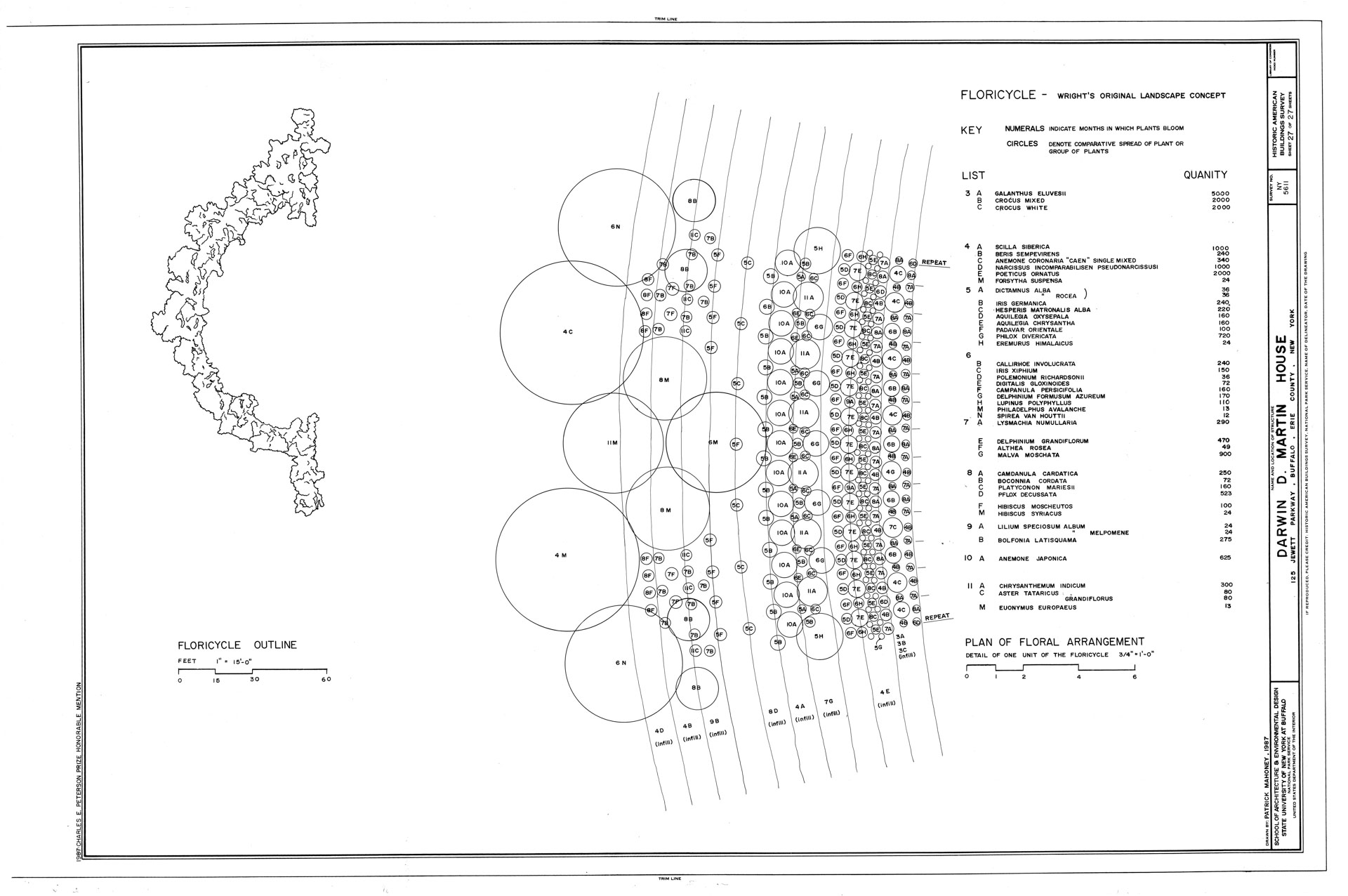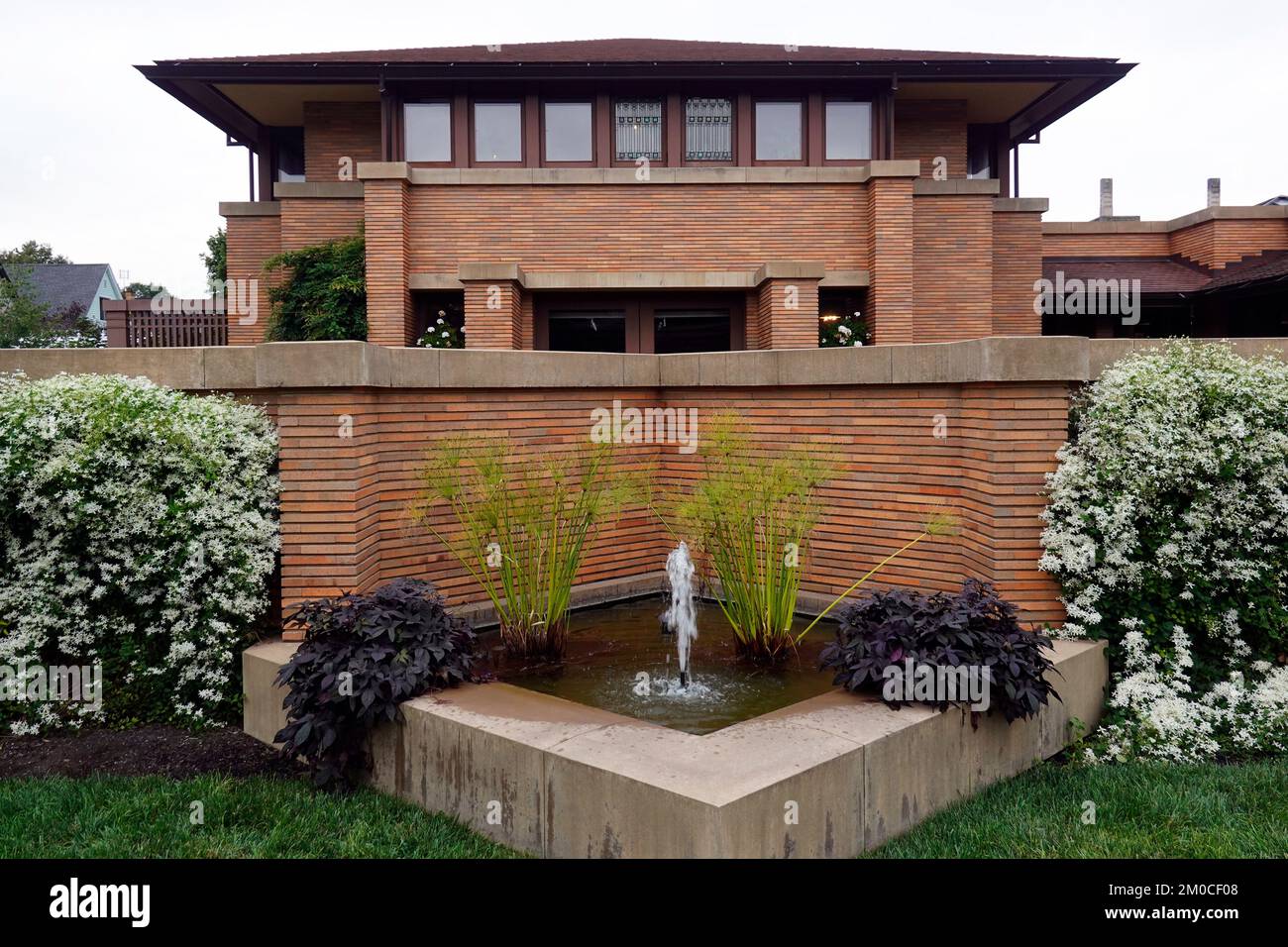Table Of Content

The house’s reinforced-concrete floors, resting on steel spanning beams, required patching on the second level, while the basement floor was raised for new mechanical equipment beneath the slab. Interior fittings, finishes, and small ceramic mosaic tiles on the ground floor and porches of the house received particular attention. Upstairs, the magnesite (a poured-cement material Wright also used in the Larkin Building) had to be replaced with a mix that contained no asbestos. Some of Wright’s original movable furniture surprisingly remained intact, along with some of the sumptuously tinted art glass, but many windows had gone missing only to reappear in the art markets. They needed to be reproduced, as did most of the built-in furniture and casework.
Cuomo announces completion of restoration of Frank Lloyd Wright's Martin House in Buffalo - Niagara Frontier Publications
Cuomo announces completion of restoration of Frank Lloyd Wright's Martin House in Buffalo.
Posted: Tue, 23 Jul 2019 07:00:00 GMT [source]
Three Ways Single-Chamber Fire-Resistive Glass will Revolutionize Glazing

The library, dining, and living rooms were differentiated from each other by the cabinetry and clusters of piers as well as by raised and lowered ceilings with wood beams, to create an open spatial unit. Wright designed all the furniture and fittings, including the piano bench for the custom Steinway. The finishes, furnishings, fabrics, and fixtures were either restored or reproduced. In 2009, a new glass-and-steel orientation center, the Eleanor and Wilson Greatbatch Pavilion designed by Toshiko Mori Architect, was added. The conservatory is an indoor glass-enclosed garden for protecting, cultivating, and showcasing rare and tropical plants.
Support
Are you looking for a way to take your event decor to the next level in Orange County CA? Balloon decor can transform any event space into something truly magical. Whether you are looking for a simple balloon arch or a more elaborate balloon installation, there is an event balloon decoration option that is perfect for your event.
Frank Lloyd Wright’s Darwin D. Martin House Complex
Darwin D. Martin had become a successful businessman at the Larkin Soap Company in Buffalo by the time the company's president, John Larkin, entrusted him with building the new administration building. Martin met with a young Chicago architect named Frank Lloyd Wright, and commissioned Wright to build a small house for his sister and her husband, George F. Barton, while creating plans for the Larkin Administration Building. Frank Lloyd Wright designed this Prairie Style Oak Park home for Arthur Heurtley, who was a banker with a keen interest in the arts. The low, compact Heurtley House at 318 Forest Ave., Oak Park, Illinois, has variegated brickwork with vibrant color and rough texture.
The city of Buffalo and its vicinity has one of the greatest collections of Frank Lloyd Wright architecture outside of Illinois. After the remodel, the size of the house had expanded to 35 rooms, 12,600 square feet, plus a 3,100 square foot carriage house. The Frank W. Thomas House at 210 Forest Avenue, Oak Park, Illinois, was commissioned by James C. Rogers for his daughter and her husband, Frank Wright Thomas.
Both homes have leaded glass windows, an arched entryway, and a low, long profile. The Thomas house is widely considered Wright's first Prairie Style home in Oak Park. Using stucco instead of wood meant that Wright could design clear, geometric forms. Waller became an early client of Wright's by commissioning the young architect to design a couple of modest apartment buildings in 1895. Waller then hired Wright to do some work on his own River Forest House, including designing the rusticated stone entrance gates at Auvergne and Lake Street, River Forest, Illinois.
Restoration
Wrights’ design is an adapted version of the Walser House in Chicago (1903), with the addition of tile roof, brick veneer, and an expanded verandah. A central 30-foot chimney creates a multi-story wigwam at the center of four residential wings. Each of the four living zones was designed for specific functional uses (i.e. for adults, children, guests, servants). Wingspread is the name given to the Frank Lloyd Wright-designed residence of Herbert Fisk Johnson, Jr. (1899 to 1978) and his family. At the time, Johnson was the President of the Johnson Wax Company, founded by his grandfather. The design is inspired by the Prairie School, but with native American influences.
HHL Architects worked on the project and supplemented the roof framing to make it stiffer (a common complaint of Wright’s architecture was the roofing, with its dramatic overhangs that often led to leaks and drainage issues). We take time to source and create the balloons to find your perfect color. We prep ahead then design and style on-site as each organic arrangement becomes it’s own unique work of art.
He designed Fallingwater, the Guggenheim Museum, and many other important buildings from the Wisconsin Taliesin studio. Today, Taliesin remains the summer headquarters of the Taliesin Fellowship, the school that Frank Lloyd Wright founded for apprentice architects. The multi-structure estate ( ) that Frank Lloyd Wright designed for Darwin D. Martin is a masterpiece of 20th century architecture.
The piers marry distinct utilitarian and aesthetic elements by serving as structural supports, room dividers, and furniture pieces that encase radiators, light fixtures, bookcases, and shelving. Described by Wright as a “domestic symphony,” the Martin House is a comprehensive residential estate. The property includes the main dwelling, a secondary house, a gardener’s cottage, and a series of interconnected buildings woven together within an integrated landscape. Art glass, furnishings, and other creative design elements—all conceived by Wright—give rise to a bold new vision of the home as a total work of art. Cassina’s astounding three-level space — designed by its art director Patricia Urquiola, the renowned Spanish architect and industrial designer — is the Italian furniture manufacturer’s largest store to date.

Taken with Wright's new Prairie Style house design, Martin commissioned Wright to design this residence at 125 Jewett Parkway in Buffalo, as well as other buildings, such as a conservatory and carriage house. During his long life, American architect Frank Lloyd Wright designed hundreds of buildings, including museums, churches, office buildings, private homes, and other structures. Known for visionary design choices and an eclectic style, he also designed interiors and textiles. Explore the grounds of the estate during this interactive audio tour, designed to be experienced on site. Today the Martin House has been completely-restored to its former magnificence in the most ambitious restoration of a Frank Lloyd Wright site ever undertaken. Three of the original elements — the pergola, conservatory and carriage house, which were demolished decades ago – are rebuilt in the first-ever reconstruction of Wright buildings.
In addition to existing wear and tear, the home sustained earthquake damage in 1994. Progress toward repairing it and insulating the structure against future rumbles has been somewhat fitful, and the home is currently closed to the public. Suzanne Stephens, a former deputy editor of Architectural Record, has been a writer, editor, and critic in the field of architecture for several decades. She has a Ph.D. in architectural history from Cornell University, and teaches a seminar in the history of architectural criticism in the architecture program of Barnard and Columbia colleges.
The Martin House is widely considered one of Wright’s finest Prairie houses – a signature work from the early years of his celebrated career. Wright himself referred to the Martin House as “the opus” and kept the site plan pinned to his drawing table for close to fifty years. Built in 1924 and occupying a majestic Los Feliz hilltop with staggering views from downtown Los Angeles to the Pacific Ocean, this remarkable property has undergone years of thoughtful restoration at a cost of nearly $17 million.

No comments:
Post a Comment